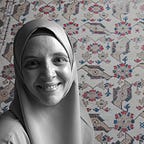Islamic Art
Five Types of South-East Asian Qur’an Design
Curators at the Islamic Arts Museum Malaysia have identified five different types of Qur’an designs. What are they, and how are they differentiated?
The rosettes and whorls found in Ottoman, Persian, Indian and Chinese Qurans are seldom seen in the Malay world. Instead, the usual arabesques and geometric designs are accompanied by vernacular vegetal and floral motifs like the clove flower.
The special attention given to the juz’ marker denotes a uniquely Southeast Asian style. A new juz’ (1/30th of the Quran) is highlighted in red ink, not customary in other parts of the Islamic world. In addition, surah headings are also normally marked in red in Southeast Asian Qurans. In addition, the text of each page is usually outlined with a number of lined frames in Southeast Asian Qurans, the style of which gives an indication of its regional origins.
There are four main categories of Southeast Asian Qurans –
- The East Coast of the Malay Peninsula
- Aceh
- Java
- The Philippines-Mindanao region
The East Coast of the Malay Peninsula
The East Coast of the Malay Peninsula consists of Terengganu, Kelantan and Patani (southern Thailand). Features in these manuscripts include:
- A border running along the exterior edges of a double-page beginning, curved at the corners.
- Delicate ornamental frames with wave-like decoration.
- ‘Interlocking wave’ pattern created by two interlocking lines to create an arch, topped off by an ogival dome.
- The use of red, yellow and powder blue.
Aceh
Key features of manuscripts from Aceh include:
- Rectangular borders that stretch above and below the boundaries of the text block.
- Arches above and below a text block in the form of lobed ogival domes
- Use of red, black and white. The chief decorative features are left in white to contrast the coloured background.
Java
Java had started to develop as a centre of learning and religious activity from the 8th century, with many centres of production. Each centre of production had its own manual for manuscript illumination, each having its own stylistic characteristics. It is therefore difficult to define specific distinctive elements.
Key features of Javanese Qurans, however, are:
- The design of one side of a page is exactly symmetrical with the other side of the page. The decoration is along all four sides of the page, not three like in other Southeast Asian manuscripts.
- The use of indigo — a trade item cultivated by the Dutch in the 1800s to satisfy demand from Europe.
- A marginal ‘ayn mark, used as an indication for sujud (prostration).
Mindanao
Mindanao in the southern Philippines has a different artistic tradition, possibly from greater Chinese influence in the area. Typical stylistic distinctions of Qurans from this region include:
- Surah al-Fatihah spans the first two facing pages, enclosed in an illuminated frame (rather than contained on one page of a two-page illuminated frame).
- Prominent use of blue.
